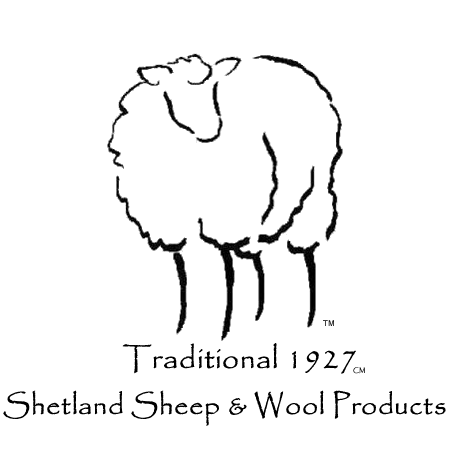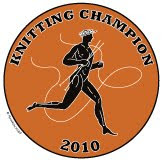Here she is, tied up for the ordeal. She looks leggy because her belly is already rooed, and there's a divot behind her withers where she has rubbed off a hand-sized patch of fleece, imbedding bits of bark in her new wool in the process. That is why I decided I'd better get busy....

I started at her head and worked my back; Rick came in and helped hold her (and even helped roo a bit) when I was working on her hindquarters. It took us awhile; the new fleece acted as Velcro with the old fleece - the old fleece didn't just "wipe" off like it did from Brava after she got sick. I was so pleased to see Butter in such good condition as her little body emerged from under the tufty fleece!

I promptly covered her with a sheep suit to keep her fleece clean, then Rick helped me give her a pedicure.
 I couldn't bear to throw away all that incredibly soft lamb fleece; I still kick myself for not saving Brava's fleece after the break. So I have most of the good stuff in a feed sack while I decide what to do with it. Should I try to process it myself, or send it out? What would remove the most VM? I have hand cards and a Clemes and Clemes drumcarder, but no combs. The fleece is probably 3-4" and very fine. I'd love some guidance from those of you with experience.
I couldn't bear to throw away all that incredibly soft lamb fleece; I still kick myself for not saving Brava's fleece after the break. So I have most of the good stuff in a feed sack while I decide what to do with it. Should I try to process it myself, or send it out? What would remove the most VM? I have hand cards and a Clemes and Clemes drumcarder, but no combs. The fleece is probably 3-4" and very fine. I'd love some guidance from those of you with experience. I couldn't resist snapping a photo of Butter's beautiful backside this morning. I doubt there is a lamb lurking in that little yearling body, although she wouldn't be due until early to mid-April. I expect awesome offspring from this girl whenever she does produce!
I couldn't resist snapping a photo of Butter's beautiful backside this morning. I doubt there is a lamb lurking in that little yearling body, although she wouldn't be due until early to mid-April. I expect awesome offspring from this girl whenever she does produce!That's it for now at . . .








16 comments:
I dunno,it looks to me like a 'lurking lamb' is a real possibility! Can't believe how cleanly she roo'd off. Wow.
Is she double coated?
I like to flick-card locks then send them through the carder. But since you rooed her the locks probably aren't intact huh...
I think I would hand card it. It is easily washed in the sink, or washer, or outside in a tub in a cold soak (see, I think it was, the fall spin-off '08), if a fleece has lots of crud in it, I will sit in my chair with a towel in my lap and pick the fibers apart while all the crud hits the towel. It is time consuming but oh-so relaxing. Did you mention that you finally joined Ravelry? I have a group there called Raw Wool Lovers Unite! and home processing raw wool is all we talk about! You should come join and post a question to the group, I dont have much experience with Shetland, so you would probably get better answers.
Wow, she looks so great after the rooing. I'm not sure I really understand the difference between rooing and shearing. Is rooing when it comes off by itself?
I think I need to join Ravelry. I will be doing some of my own processing for the first time this year, after our first ever shearing in March. I'm so excited! And so ignorant of what lies ahead!
That's right, Claire; shearing is when the fleece is cut off with shears (electric or hand) or even scissors. Rooing is pulling the fleece off with your fingers/hands, and requires a natural "break," or weak spot in the fleece. Butter (and Brava) had a break from illness, but some Shetlands have a natural seasonal break and can be rooed. That was the traditional way of harvesting fleece in Shetland, but most shepherds in the US don't roo, and a lot of Shetlands don't get that distinct break - at least all once. My first two Shetlands would roo their neck and chest fleece, but not the fleece on their body. And if it's not loose, they don't much like you pulling on it!
Rooing leaves a beautiful sheep. Butter looks great, so smooth and soft looking.
I agree with Tammy.... There may be a lurker "hiding in the Butter" :)
Hi Michelle, I'm a little confused about what rooing is and when you said the old fleece didn't wipe off. Is it different to shearing?
She looks really great and such a pretty face. I would like to learn more.
Sara, rooing is "plucking" the fleece by hand. Brava's break was so complete that I could literally wipe her loose fleece off with my hands; Butter's had to be pulled off bit by bit. Got it?
She looks pregnant to me to. The sagging in the belly back by the udder, and the fact that I can actually see teats are good clues. When I start to notice teats, my girls are 6-8 weeks out.
All three of my ram lambs have started to roo. I'm going to wait as long as I can before rooing. It comes off so much easier when the lanolin is warm. It is harder to shear a sheep when the lanolin is cold to. I was thinking that the cold lanolin might be helping to keep the fleece on the sheep until it warms up. When it is warm enough to soften the lanolin, then the sheep most likely can do without his winter coat.
Rooablility is actually one of the traits that the small farm flocks would benefit for selecting for, if it can be selected for. I had a wether last year that did a perfect roo. It took me under 10 minuets to do a complet roo head to tail, and it all came off in one complete peice just like if he was shorn. It was easier than plucking an angora rabbit. No electical cords to set up, and no expensive shears needed. The small hobby farmer would definiatly benifit from being able to roo his sheep.
I'm hoping for little gulmogets from Butter and Inky.
Hey Susan! I would be thrilled with a lamb from Franjean out of Butter; I always thought they would make the best pairing of the four girls. Guess I'll have to wait and see!
Do you think Butter might have rooed because she has that trait, rather than because she got sick? Do her parents roo? I didn't learn about rooing until after I got my first Shetlands, or I definitely would have looked for sheep with that trait. It would be great if Butter did this every year; I think keeping my sheep coated would contribute to keeping the rooing fleece in place until I was ready to remove it.
Wow - that's interesting, Michelle. I had no idea you could just pull the fleece of a sheep. Since I can't work with raw fleece, I would send it out to be processed. You were wise to keep it - and whether you "do it yourself" or send it out, I predict some pretty great spinning in your future :-)
If the fleece is at least 3 or 4 inches long, you could probably comb it. That's the best way I've found to get the veg out. Good luck!
She's gorgeous!
If you have veggie matter, comb comb comb comb :)) It is the easiest way to get rid of it.
As someone fairly new to sheep (a little over a year) I'm still learning. I hand-sheared my Navajo Churro last Fall and she looked pretty rough afterwards. lol! A shearer I am not yet. What is rooing?
Butter's shearing was perfect! She looks smooth and lovely now. HOw long have you been shearing?
Can you tell I'm impressed?
I'm looking forward to shearing my Karakul sheep once I'm able. I'm excited about working with her lovely black fleece.
~Lisa
word verification: 'lissa'
(How cool is that?)
Ok...I just read your all your replies and I finally get 'rooing'.
Never knew that was possible with sheep. Very cool!
I wonder if other breeds of sheep, like my churro and karakul can also be rooed?
~Lisa
Post a Comment